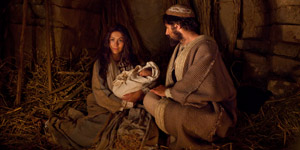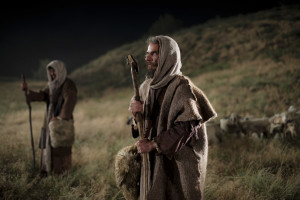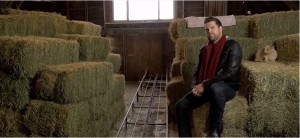 It is Christmas time, and time for a carol. Perhaps the most popular Christmas carol of all-time is the beloved classic “Silent Night.” It is sung around the world in many different languages by church choirs, as a main song in Christmas pageants, and has been recorded and performed by numerous artists over the years, including the version sung by Bing Crosby which has become the third best-selling single of all-time. But, have you ever wondered how the song came to be written and set to music?
It is Christmas time, and time for a carol. Perhaps the most popular Christmas carol of all-time is the beloved classic “Silent Night.” It is sung around the world in many different languages by church choirs, as a main song in Christmas pageants, and has been recorded and performed by numerous artists over the years, including the version sung by Bing Crosby which has become the third best-selling single of all-time. But, have you ever wondered how the song came to be written and set to music?
The story is told that in 1818, a roving band of actors were traveling throughout the Austrian Alps performing in the various towns. On 23 December 1818, they arrived at Oberndorf (German: upper village), a village near Salzburg, Austria where they were to re-enact the story of the birth of the Savior in the small Church of St. Nicholas.
Sadly, to their chagrin, the organ at the church was in need of repairs that would not be finished before Christmas, and so, the actors presented their Christmas drama of the events found in the first chapters of Matthew and Luke in the Bible, in a private home. The presentation left assistant pastor, Josef Mohr, with some things to ponder. Instead of going straight home after the performance that evening, Mohr took a longer path home which took him up over a hill overlooking the village.
 It was there atop that hill, looking down on the serene snow-covered village, and relishing in the sound of silence of that wintry night, Mohr remembered a poem he had written a couple of years before. The poem was about the night in Bethlehem when the angels announced the birth of the long-awaited Messiah to shepherds on a hillside.
It was there atop that hill, looking down on the serene snow-covered village, and relishing in the sound of silence of that wintry night, Mohr remembered a poem he had written a couple of years before. The poem was about the night in Bethlehem when the angels announced the birth of the long-awaited Messiah to shepherds on a hillside.
Mohr decided that the words of the poem might make a good carol for his congregation at their Christmas Eve service, albeit he did not have any music to which the words could be sung. So, the next day he went to see the church organist, Franz Xaver Gruber. With only a few hours to compose a melody which could be sung with a guitar, Gruber managed to set the poem to music, and it no longer mattered to either himself or Mohr that their church organ was inoperable. They now had a Christmas carol that could be sung without the accompaniment of an organ. At the Christmas Eve service, the congregation of the Church of St. Nicholas heard Mohr and Gruber sing their new composition accompanied by Gruber’s guitar.
Renowned organ builder, Karl Mauracher, arrived in Oberndorf weeks later to fix the organ. Upon completion of his repairs, he let Gruber test it. When he sat down to play, he began playing the simple melody that he had written for Mohr’s poem. Mauracher was so impressed by what he had heard that he took copies of the music and words (the second sheet of music can be found here) of “Silent Night” back to his own Alpine village, Kapfing. There, the Rainers and the Strassers – two well-known families of singers – added the song to their Christmas season repertoire.
The Strasser sisters spread the carol across northern Europe, and in 1834, they performed “Silent Night” for King Frederick William IV of Prussia who in turn ordered his cathedral choir to sing the song every Christmas eve. Twenty years after “Silent Night” was written, the Rainers introduced the song to the United States, singing it in German (Stille Nacht, heilige Nacht) at the Alexander Hamilton Monument located outside New York City’s Trinity Church.
 In 1863, after nearly 50 years of first being sung in German, “Silent Night” was translated into English (by either Jane Campbell or John Young). Eight years later, that English version appeared in print in Charles Hutchins’ Sunday School Hymnal. And today, the words of “Silent Night” are sung in more than 300 different languages around the world.
In 1863, after nearly 50 years of first being sung in German, “Silent Night” was translated into English (by either Jane Campbell or John Young). Eight years later, that English version appeared in print in Charles Hutchins’ Sunday School Hymnal. And today, the words of “Silent Night” are sung in more than 300 different languages around the world.
Latter-day Saint Musicians rings in the Christmas season with this week’s “Video Find of the Week” which features the talented country singer, Nathan Osmond, singing his rendition of the beloved classic “Silent Night.” We hope that this song will help set the spirit of Christmas for you and your family.


